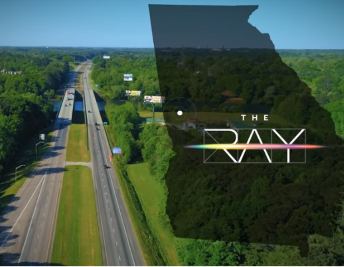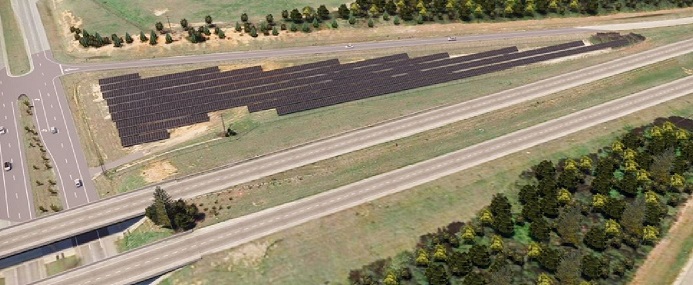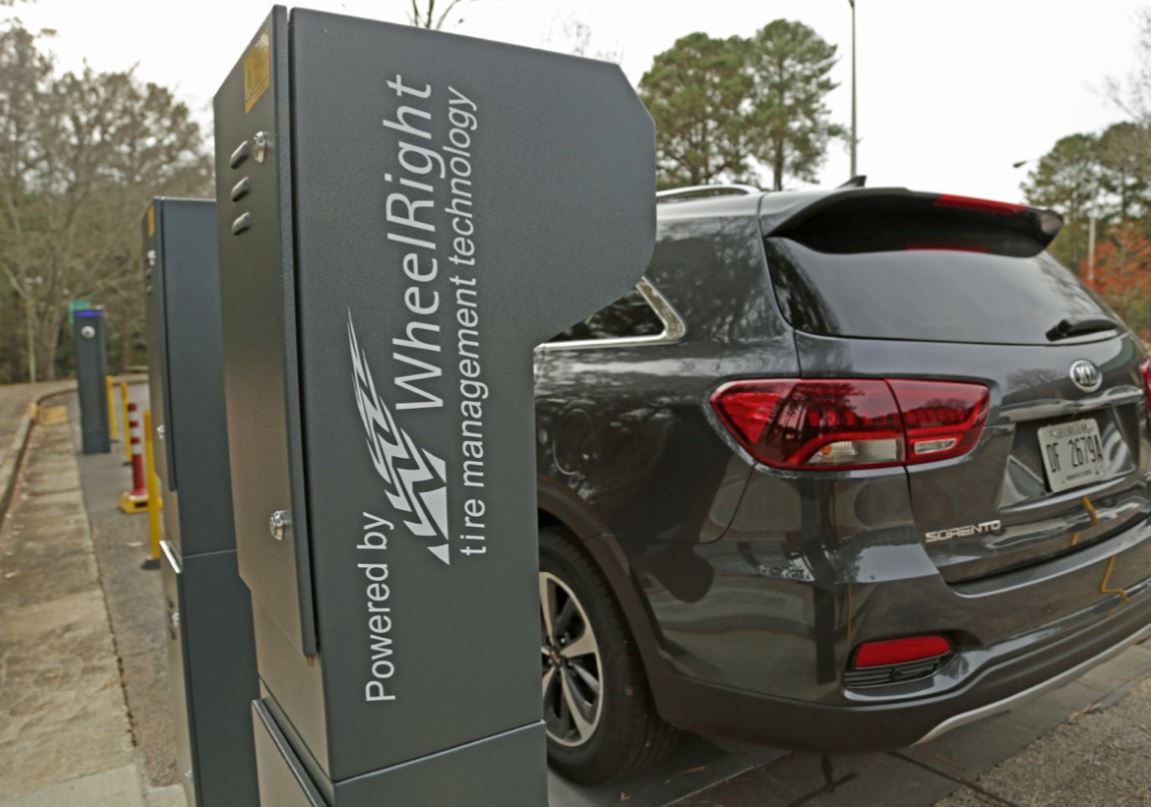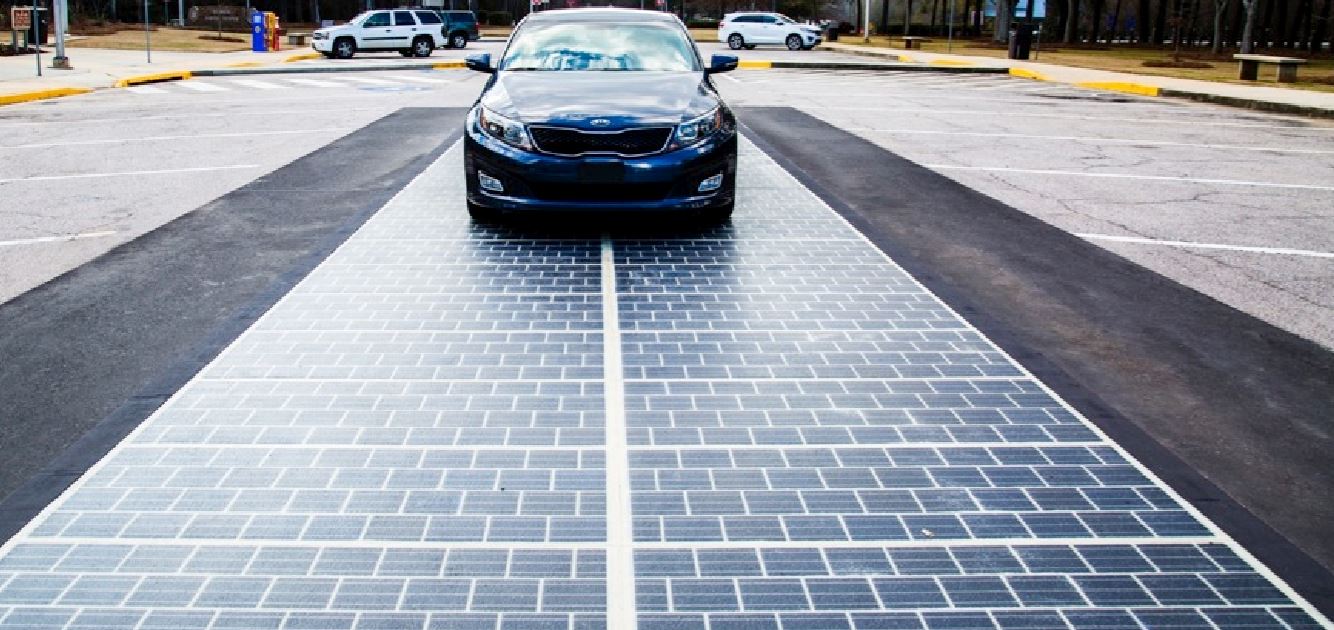An 18-mile stretch of roadway in Georgia is serving as a testing and proving ground for sustainable transportation technologies, with the support of the Georgia Department of Transportation (GDOT).

The Ray C. Anderson Memorial Highway, known as “The Ray,” is a section of Interstate 85 in the southwestern portion of the state. Since 2014, the roadway has been serving as a test bed for sustainable and safety-related transportation technologies. Innovations include the first solar road in the U.S., the first drive-over tire safety station in the world, a solar-powered electric vehicle charging station, and cost-efficient landscaping techniques that double as pollinator habitat.
The Ray is named after Ray C. Anderson, a Georgia native and founder of Interface Inc., who was recognized for his commitment to corporate sustainability. The Ray was founded by Anderson’s daughter, Harriet Langford, a trustee of the Ray C. Anderson Foundation. The Ray is supported by public/private/philanthropic partnerships (P4s) that includes the foundation; public partners, including the Georgia DOT and the Federal Highway Administration; and private-sector technology innovators.
Demonstrating What is Possible
Allie Kelly, executive director of The Ray, said the partnership is working to demonstrate what is possible on an operational interstate – technologies and approaches that are repeatable and scalable for use on the highways of the future.
One promising technology is a “clean energy power plant” installed in the right-of-way at Exit 14 on The Ray. The solar power project – which includes 2,600 high-efficiency solar panels – provides an opportunity for the roadside real estate to be more productive, Kelly said. To make even better use of the land, the panels are surrounded with native, pollinator-friendly wildflowers.

Such right-of-way solar projects – which have been successful in other states– provide opportunities for state DOTs to negotiate power purchase agreements and earn renewable energy credits, reducing the costs DOTs have to bear, Kelly said.
Accommodating the Vehicles of the Future
Additional technologies are targeting the use of infrastructure and data in support of connected and automated vehicles. From an infrastructure standpoint, The Ray has installed reflective road striping with dashed lines at the exits that are easily readable by autonomous vehicle computer vision systems.
The Ray also installed a vehicle-to-everything (V2X) data ecosystem to enable the state’s first connected interstate roadway, through a partnership with GDOT and Panasonic. Georgia is the second state in the nation, after Colorado, to invest in the digital infrastructure for ingesting connected vehicle data streams and managing that data, Kelly said.
“We have six dual-mode roadside units on The Ray that are able to broadcast and ingest data in both cellular V2X as well as DSRC technology. We are technology agnostic and future-proofed,” she said. This infrastructure adds to 2,600 or more signalized connected intersections installed in the region by GDOT and the Atlanta Regional Commission.
Tire Safety: A Solvable Problem
The Ray also is demonstrating the first public tire safety station in the world, a simple solution to help drivers properly maintain their tires.
The WheelRight station– located at the visitor information center – is a drive-through system that analyzes tread depth, tire pressure, sidewall damage, and vehicle weight, all within seconds. The data are provided to drivers to help maintain their vehicles.

“In the United States, under-inflated tires waste two billion gallons of fuel per year and increase tailpipe emissions,” a problem that is easily solved, she said.
Innovative Vegetation Management
Kelly also described vegetation management techniques being developed to help DOTs battle invasive weeds without relying on potentially harmful chemicals. Several pilot projects underway at Exit 6 of The Ray are testing seed mixes including native wildflowers that could reduce the need for mowing and prolong the blooming season to help beautify the roadsides.
Other vegetation techniques being tested include the use of deep-rooted grasses that retain water, sequester carbon, and stabilize flood-prone soils. Native vegetation also is being planted in bioswales, which are shallow drainage ditches designed to capture pollutants from roadway runoff.

The long list of additional technologies being tested and demonstrated on The Ray include:
- A solar-cell paved roadway pilot, Wattway, that allows the road surface itself to generate solar energy.
- A solar-powered “photovoltaic for electric vehicle” (PV4EV) charging station.
- Pavement technologies, including use of rubberized asphalt from repurposed scrap tires on the first mile of The Ray, and open-graded friction course technology for better water infiltration on 13 miles of the roadway.
The Ray also is supporting a vulnerability assessment to anticipate how weather patterns and climate change will impact the area, to guide future needs on The Ray and other roads in the region.
Finding ‘Quick Wins’
When asked about lessons learned from technologies on The Ray, Kelly said “there are tools in the toolbox we are not using.”
Many of these are “super-easy, no regrets” approaches. “We need to be better at the quick wins,” while also pursuing more complicated strategies, like data management platforms that will accommodate automated and connected vehicles, Kelly said.
“Modernizing the infrastructure to accommodate such technologies should be a priority, not because it’s sexy, but because it will save lives,” she said.
For more information, link to The Ray website or contact Allie Kelly at [email protected]. See also AASHTO’s Environmental Technical Assistance Program article and related podcast: An Interview with Allie Kelly, Executive Director of The Ray.